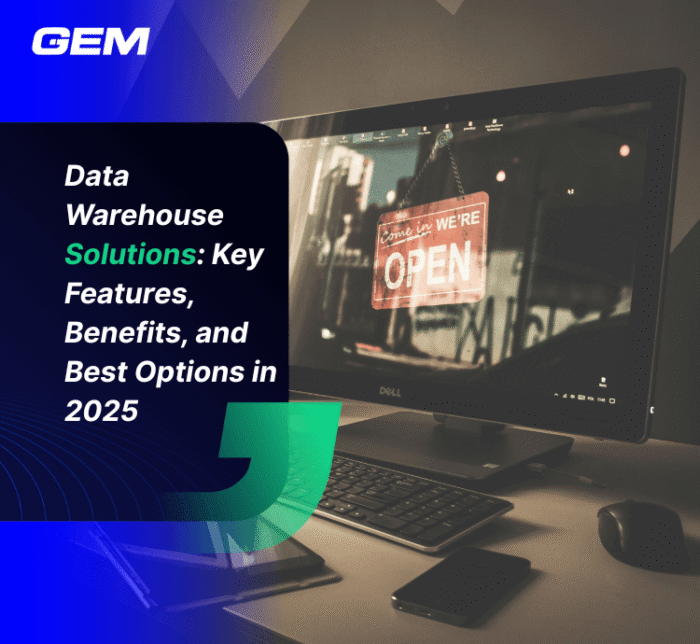Contents
- What is automated data processing?
- Types of Data Processing Automation
- Benefits of Automated Data Processing
- Real-Life Examples of Automated Data Processing
- BFSI: Automated Loan Underwriting in Retail Banking
- Healthcare: Patient Record Structuring for Clinical Decision Support
- Edutech: Adaptive Learning Paths in K–12 Platforms
- Manufacturing: Quality Inspection Using Computer Vision and Data Pipelines
- Telecommunications: Network Fault Detection from Log Data
- Retail & E-commerce: Personalized Product Recommendations at Scale
- Important Considerations for Implementation
Automated data processing leverages advanced technologies to handle tasks like data collection, transformation, and analysis with minimal manual effort. It addresses the demands of managing large data volumes in a way that is efficient, scalable, and precise. Research from Teramot shows that businesses adopting automation in workflows can achieve operational cost savings of 40-60%. In this article, we will define “what is automated data processing?” examine its core components, discuss its benefits, explore practical applications, and outline factors businesses should evaluate for successful adoption.
What is automated data processing?

Define automated data processing
Automated data processing refers to the application of advanced technologies to perform tasks such as data collection, transformation, and analysis with minimal manual intervention.
This approach addresses the growing demands of managing extensive datasets while fostering operational efficiency and precision. By automating these workflows, organizations can effectively handle complex data operations and leverage insights for informed decision-making.
Key components of automated data processing
Data Input and Collection
This stage involves acquiring raw data from various sources, including databases, APIs, IoT devices, and enterprise systems. Automation facilitates consistent and real-time gathering of information, minimizing errors and streamlining the integration of data from diverse inputs. A robust data collection system forms the foundation for all subsequent steps in the process.
Data Validation and Cleaning
Collected data is refined to address inconsistencies, correct inaccuracies, and fill in missing details. Validation checks confirm data reliability, while cleaning processes prepare it for subsequent stages. Automation expedites these tasks, improving the quality and readiness of the dataset.
Data Transformation and Structuring
After validation, data is transformed to meet specific formats or structures required for analysis. This step involves reformatting, categorizing information, and preparing the data in a way that makes it actionable. Automated transformation processes streamline this stage, increasing speed and consistency.
Data Storage and Organization
Processed data is stored in centralized systems such as data lakes, warehouses, or structured repositories. These systems organize and categorize data for easy retrieval and scalability, supporting ongoing analysis and reporting needs. Proper storage practices allow businesses to maintain usability for future applications.
Data Analysis and Insight Generation
The final stage involves analyzing the refined data to generate insights. By applying algorithms, analytics tools, or visualization platforms, businesses can uncover trends, detect anomalies, and derive actionable strategies. Automated systems perform these tasks with efficiency and accuracy, aligning outputs with organizational objectives.
Types of Data Processing Automation
Automated data processing takes many forms, depending on the timing, architecture, and scale of the task. Each method offers distinct advantages, depending on the workflow it supports. Understanding these types provides clarity on how automation aligns with operational needs, from daily reporting to real-time monitoring.

Batch Processing
Batch processing handles large volumes of data at scheduled intervals. It is commonly used in back-office operations where immediate output is not required, such as payroll runs, monthly billing, or end-of-day financial reconciliation.
Data is collected over time, processed in groups, and typically executed during off-peak hours to make efficient use of system resources. This approach supports predictable workloads, simplifies error tracking, and aligns well with structured reporting cycles.
Stream Processing
Stream processing manages continuous flows of data in real-time. It is often applied in scenarios where timing is a core requirement, such as network monitoring, fraud detection, or live recommendation engines.
Instead of waiting for a defined input size, systems process each data point as it arrives. This approach provides near-instant feedback and supports event-driven decision-making. Use cases in telecommunications and digital commerce rely heavily on this method to maintain service quality and customer responsiveness.
Multiprocessing
Multiprocessing refers to running computations across multiple processors within a single system. It breaks down complex operations into parallel tasks, which are executed simultaneously.
This approach is particularly useful for high-volume, compute-heavy workloads, such as data modeling, simulation, or advanced analytics. By distributing the workload across cores, organizations can shorten processing time while maintaining accuracy. It is frequently adopted in environments that handle structured datasets with high computational intensity.
Distributed Processing
Distributed processing spreads tasks across multiple machines, often in different locations, connected through a network. This structure is designed to manage large-scale data environments where a single system cannot handle the load alone.
Tasks are segmented and processed in parallel, with systems coordinating to maintain consistency. If one node fails, the others continue operating, which supports business continuity. This method is widely used in cloud-based architectures, enterprise data lakes, and global analytics platforms.
Benefits of Automated Data Processing
Automated data processing has become central to enterprise operations. As data volume, velocity, and variety continue to rise, automation offers a way to manage complexity without adding overhead.

Now, let’s take a deeper look at the functional and strategic advantages gained from automating data workflows.
- Operational Consistency Across Workflows
Automated systems follow predefined logic, which reduces variability in how data is handled across teams and systems. When processes are repeated the same way, outcomes become more dependable. This consistency is particularly valuable in environments where data flows through multiple departments or platforms.
For example, in financial reporting, consistency reduces the risk of discrepancies between internal dashboards and external disclosures. In customer analytics, it helps align marketing, sales, and service functions around a unified dataset.
- Time Redeployment Toward Strategic Work
Tasks such as data formatting, rule-based validation, and scheduled reporting often consume a disproportionate share of analysts’ time. When these tasks are automated, turnaround times shrink and human effort shifts toward interpretation and planning. This change doesn’t just improve productivity, it alters the composition of work.
Analysts move from preparing data to advising on its implications. Business users gain access to self-serve insights faster, which shortens the feedback loop between observation and action.
- Higher Data Quality at Scale
Manual data entry and processing introduce risks—typos, missed fields, inconsistent labels, and overlooked errors. Automated data pipelines apply the same rules repeatedly, reducing the chance of such mistakes.
They also apply validation checks in real-time, which helps catch anomalies before they propagate. This reliability becomes more valuable as organizations scale. Inconsistent or flawed data can lead to poor decisions, compliance issues, or customer friction. A more stable data foundation lowers those risks.
- Scalable Infrastructure for Expanding Data Needs
As companies grow, their data environments become more complex: more sources, more touchpoints, and more systems. Manual workflows often hit capacity limits – what works with ten thousand rows breaks with ten million.
Automated processes are built to absorb this growth. They can process increasing volumes without requiring additional labor or rework. This scalability supports business expansion, whether entering new markets, launching new products, or integrating acquisitions, without the need to rebuild core data processes each time.
- Access to Real-Time Insights
In traditional reporting cycles, data is often days or weeks old by the time it reaches decision-makers. Automated processing changes that dynamic. With continuous data ingestion and transformation, businesses can work from live inputs rather than static snapshots.
This shift is especially relevant in areas such as supply chain operations, financial risk monitoring, or digital commerce, where conditions change quickly and decisions must keep pace. Real-time visibility allows teams to respond when it matters most.
- Lower Operational Load on Data Teams
Without automation, data teams spend a large portion of their time maintaining pipelines, rerunning failed reports, or reconciling mismatched fields. These tasks are not just time-consuming; they also introduce distractions that limit innovation. Automation reduces the volume of manual checkpoints and interventions required to keep data flowing.
It also brings transparency into the system: logs, alerts, and version controls provide clarity over how data is moving and changing. As a result, teams can operate with fewer disruptions and direct more attention toward long-term value creation.
- Room for Strategic Flexibility
When routine work is handled automatically, teams are free to pursue more exploratory or forward-looking initiatives. This could include running new segmentation models, testing pricing logic, or building customer lifetime value frameworks.
Some may mistake these new technologies are taking away our work, but that’s not it. Automation does not replace human judgment; rather, it creates the space for it. Once the friction of low-value tasks is removed, it allows data professionals and business leaders to think more broadly, test more ideas, and adapt more quickly.
Real-Life Examples of Automated Data Processing
Understanding “what is automated data processing?” becomes more tangible when viewed through the lens of real-world application. Across sectors such as BFSI, healthcare, edutech, manufacturing, and telecommunications, organizations are turning to automation not as a trend, but as a necessary response to operational complexity and rising data volumes.
If data service is a trend, explore: 5 trends of Data Service

BFSI: Automated Loan Underwriting in Retail Banking
Retail banks process thousands of loan applications every day, each requiring document verification, risk scoring, and compliance checks.
For instance, a private bank in Asia implemented an automated underwriting system that pulls applicant data from internal systems, credit bureaus, and government APIs. Once collected, the data is cleaned, categorized, and passed through a set of rules-based engines that compute eligibility in under a minute. This has shortened customer wait times and allowed credit officers to focus on complex cases rather than routine approvals.
Healthcare: Patient Record Structuring for Clinical Decision Support
In large hospital networks, doctors often face delays due to fragmented patient records spread across departments.
A regional healthcare provider in Europe introduced an automated data pipeline to unify patient histories, lab reports, prescriptions, and imaging data, into a single structured format. Optical Character Recognition (OCR) and Natural Language Processing (NLP) were used to digitize handwritten notes and extract key variables. The cleaned and organized data feeds into a decision-support dashboard used by clinicians during consultations. This has improved diagnostic turnaround and reduced the administrative burden on the medical staff.
Edutech: Adaptive Learning Paths in K–12 Platforms
An education technology firm operating across India and Southeast Asia uses automated processing to personalize learning content for school students. As learners complete assessments or engage with course material, the platform captures interaction data – response time, accuracy, and content preference. This data is processed in real-time to adjust the difficulty level and recommend the next module.
The algorithm classifies learners into behavioral segments, allowing educators to intervene where needed. This approach has increased learning engagement and helped standardize outcomes across varied student profiles.
Manufacturing: Quality Inspection Using Computer Vision and Data Pipelines
A global automotive parts supplier integrated automated data workflows into its quality control process. High-resolution cameras capture images of components on the assembly line. These images are processed using computer vision models that flag defects such as surface irregularities or dimension mismatches. The flagged data is tagged, logged, and pushed into a reporting system used by floor supervisors.
Over time, the system learns from operator feedback, improving its accuracy. This has helped the plant maintain uniform product quality without slowing down production cycles.
Telecommunications: Network Fault Detection from Log Data
A telecom operator in Latin America manages infrastructure across remote and urban regions. To monitor service availability, the operator set up a system that collects log data from thousands of network nodes. Automated scripts clean, timestamp, and categorize the data before running it through anomaly detection models.
When irregular patterns emerge, such as signal drops or latency spikes, the system generates alerts and suggests probable causes. Field teams can then prioritize their response based on impact level, reducing downtime and improving service continuity.
Retail & E-commerce: Personalized Product Recommendations at Scale
A fast-growing e-commerce marketplace in Southeast Asia integrated automated data processing to deliver personalized shopping experiences across mobile and web platforms. Customer behavior, such as browsing history, purchase frequency, and search terms, is collected in real-time and processed through a recommendation engine. The system classifies users into behavioral clusters and serves product suggestions tailored to each profile.
These recommendations are updated dynamically based on recent activity, time of day, and seasonal trends. This approach has raised session-to-purchase conversion rates while supporting a more curated user experience.
These examples show that automated data processing emphasizes the central role in how services are delivered, how decisions are made, and how organizations respond to real-time demands.
Explore more: AI in data analytics
Important Considerations for Implementation
Automating data processing is rarely a plug-and-play exercise. It involves aligning systems, redesigning workflows, and building the right infrastructure to support long-term scalability. While the advantages are clear, missteps during implementation can lead to fragmented systems, unreliable outputs, or underutilized investments. The following considerations can help organizations approach automation with greater clarity and control.

1. Assess Internal Readiness
Before deploying automation tools, it’s important to evaluate current data maturity. This includes reviewing data quality, governance models, and the interoperability of systems across departments. Automation built on fragmented or outdated data infrastructure often leads to unreliable outcomes. A clear inventory of existing assets and gaps can guide the architecture of the automation pipeline.
2. Define Use Cases with Measurable Outcomes
Not all processes benefit equally from automation. Prioritizing use cases with clear bottlenecks, repetitive tasks, or high error rates allows teams to focus on areas where automation delivers measurable returns. Well-scoped use cases also simplify stakeholder alignment and allow for more targeted resource allocation.
3. Align Processing Method with Business Needs
Choosing between batch, stream, multiprocessing, or distributed processing depends on the timing, scale, and complexity of the task. Stream processing may suit fraud detection or network monitoring, while batch processing may be better for monthly reconciliation. Aligning method with purpose avoids overengineering and keeps systems manageable.
4. Plan for Integration and Change Management
Automation does not operate in isolation. Implementation must account for its interaction with upstream data sources, downstream analytics platforms, and user-facing applications. In parallel, teams need structured change management, training, revised workflows, and clear documentation to support internal adoption.
5. Work with an Experienced Partner
Building a reliable automation environment often involves navigating legacy systems, selecting appropriate technologies, and designing flexible data architectures. These demands call for more than technical competence; they require domain understanding and a structured delivery model.
GEM has supported enterprises across finance, healthcare, education, and manufacturing in designing and implementing automation pipelines tailored to their operational context. With over 500 technology professionals and a portfolio spanning 10+ markets, GEM helps clients move from concept to execution – balancing speed, precision, and business alignment.
6. Establish Monitoring and Maintenance Protocols
Once deployed, automation systems need ongoing oversight. Monitoring mechanisms should track performance, detect anomalies, and trigger alerts when workflows deviate from expected patterns. In addition, maintenance protocols, such as version control and rollback plans, protect against downstream disruptions and support long-term reliability.
Automation can transform data operations, but its success depends on thoughtful implementation. By addressing both technical and organizational dimensions from the outset, and by partnering with those who bring both experience and execution capability, organizations can build systems that scale with confidence and deliver lasting value.
Automated data processing plays a central role in how modern enterprises manage scale, complexity, and speed. Understanding what is automated data processing offers a lens into methods like batch, stream, and distributed execution, each aligned with specific operational needs. Use cases across banking, healthcare, education, and industry show how automation supports faster decisions and cleaner workflows. Implementation requires more than tools; it calls for clear use cases, integration planning, and experienced delivery partners. As data becomes more central to performance, automation provides the structure to move with precision, while keeping pace with shifting demands.
If your organization is exploring automated data processing to improve decision accuracy, system reliability, or operational speed
GEM brings the technical depth and sector experience to deliver.
Speak with our team to identify the right approach for your data workflows and build solutions aligned with your business priorities.






